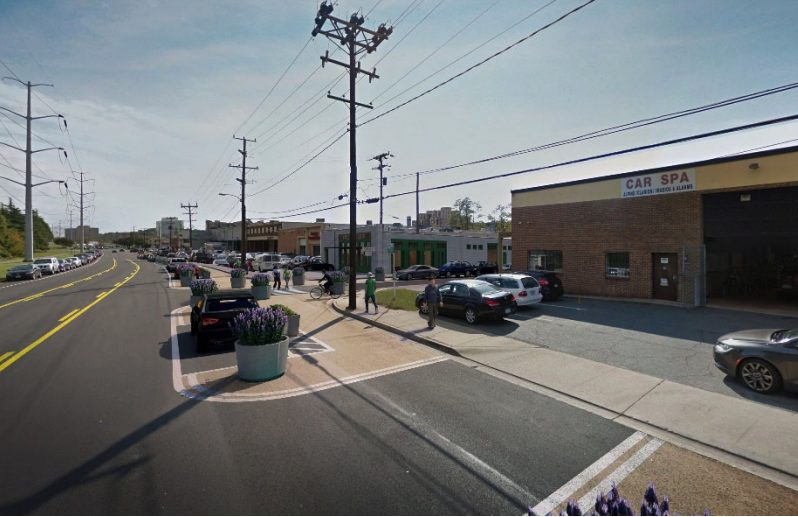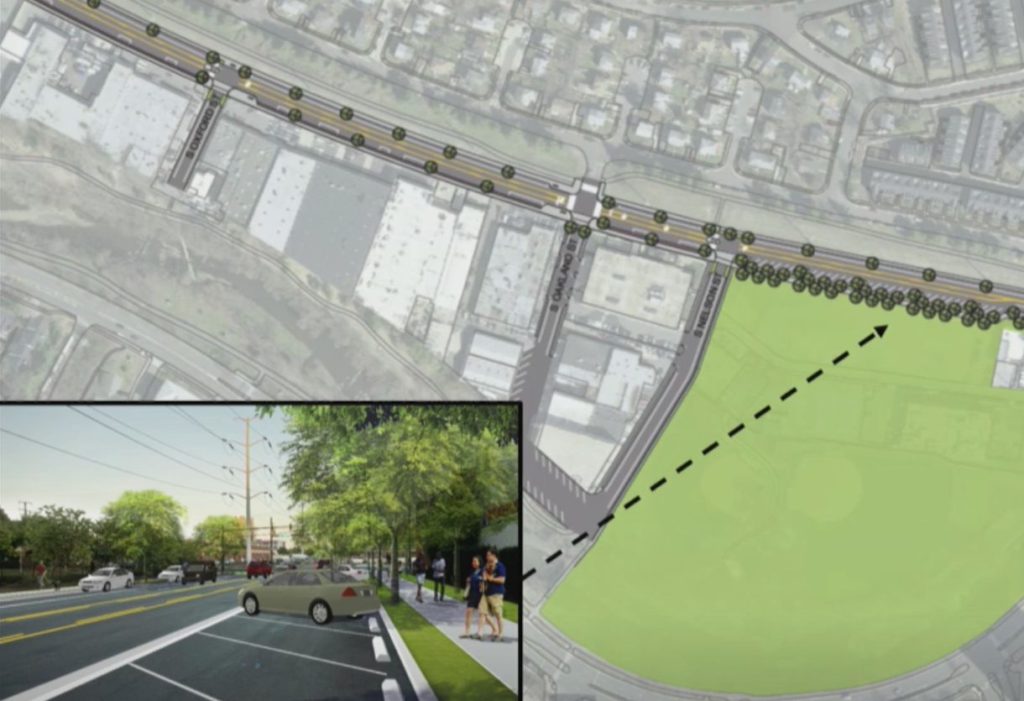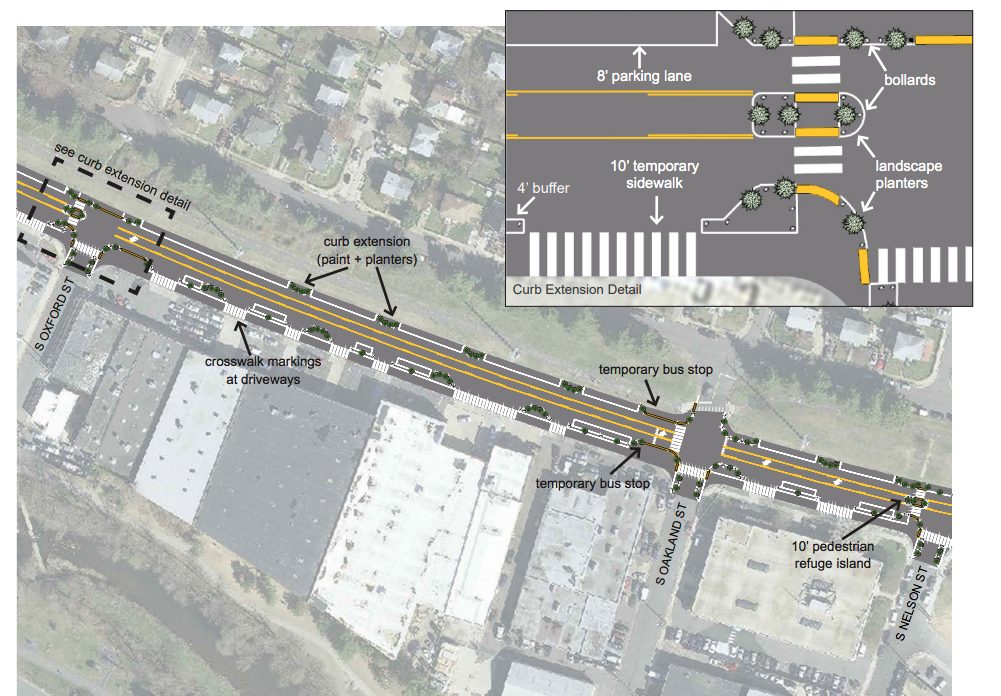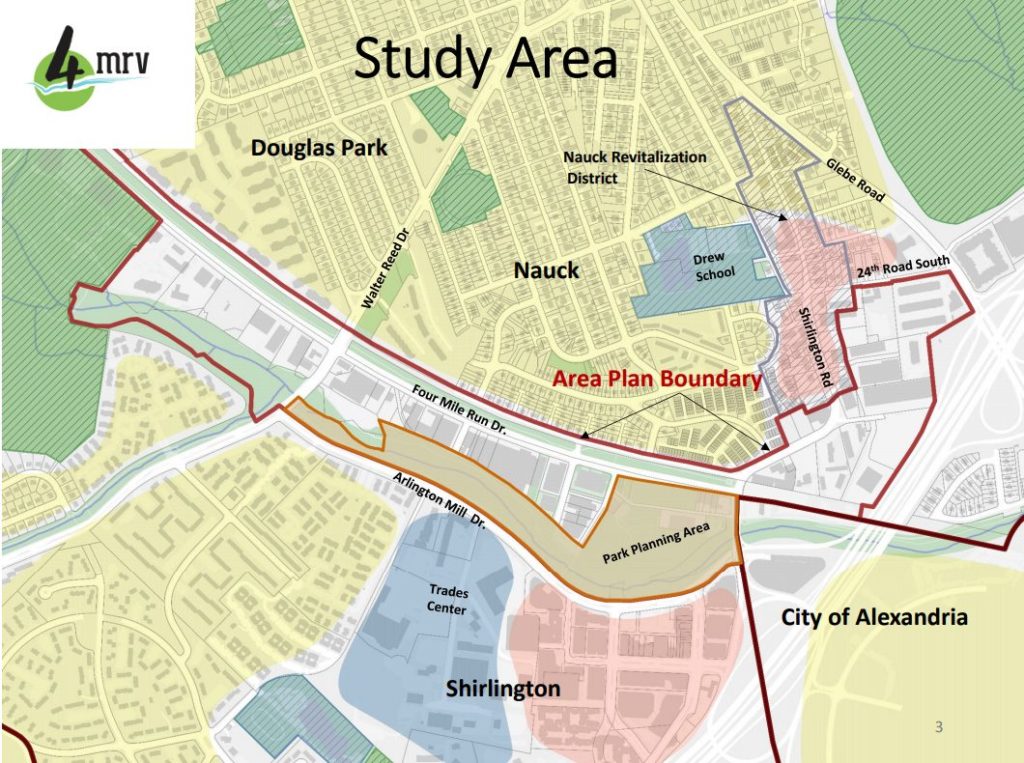Arlington officials have, at long last, approved a new planning document to guide the Four Mile Run Valley’s future, one of the last remaining steps for the county to take in the years-long debate over the area’s development.
The County Board unanimously signed off on new “area plan” for the Nauck valley on Saturday (Nov. 17), sketching out the county’s strategies for fostering the preservation and growth of industrial and arts-focused businesses in the area.
The plan also lays out a series of potential road and parking changes in the area, which have prompted some community consternation even as the planning process wraps up. Some Nauck leaders have previously expressed grave concerns that county officials aren’t listening to their suggestions for the area’s development, and that includes fears about the road changes on the way for S. Four Mile Run Drive.
“An important element is missing: trust,” Nauck Civic Association President Portia Clark told the Board. “The county needs to work with us to repair the loss of trust… We were here before the planning process began, and we’ll be here long after.”
But Board members expressed broad satisfaction with the plan, despite those anxieties, arguing that the roughly three-year-long planning process delivered an outcome that will benefit the community for years to come.
“We’re going to all look back on this process, as occasionally challenging as it was, and see that this will be a true jewel for not only South Arlington, but the county as a whole,” said Board member John Vihstadt, the Board’s liaison to a working group convened to assemble the plan.
The Board previously adopted a broad “policy framework” guiding all manner of future changes to the area this spring. The working group and county staff then relied on that document to develop a parks master plan for the area, primarily focused on the overhaul of Jennie Dean Park, and then assembled the final area plan.
Among the document’s proposed changes are road alterations designed to make S. Four Mile Drive and some of its side streets more friendly for both cyclists and pedestrians, and free up more parking along the road. Changes will include new sections of sidewalk, a new pedestrian crossing island and curb extensions, as well as more robust parking restrictions and enforcement to encourage more turnover.
But those alterations will only be temporary, as the county examines whether they actually work. Officials could even initiate more dramatic changes going forward, like the addition of more angled spaces leading up to Jennie Dean Park and even the conversion of S. Four Mile Run Drive into a two-lane road with a dedicated middle turning lane.
“There are still some concerns on the road changes… but the community has accepted the ‘test first, build later’ strategy,” said Charles Monfort, chair of the Four Mile Run Valley Working Group.
Yet Monfort’s leadership of the group attracted a public rebuke from one of his fellow vice chairs in a Washington Post opinion piece, as Robin Stombler argued that the public engagement process on all manner of issues was flawed — Monfort insisted Saturday that “anyone’s who wanted to speak has had many opportunities to do so.”
But Stombler and other Nauck residents charged that the parking changes are simply the latest example of the community’s concerns being cast aside. Clark pointed out staffing challenges in the Arlington police department means officers have less time to dedicate to traffic enforcement, making any pledge to step up the policing of parking violations on S. Four Mile Run Drive a hollow one.
“It makes no sense to test parking restrictions that will not be enforced and will actually increase parking turnover problems,” said Anne Inman, one of the Nauck Civic Association’s representatives on the working group.
Vihstadt also expressed some trepidation that the county is “really engaging in real time” on these issues, worrying that officials might “prioritize beauty and aesthetics over operational, on-the-ground needs for businesses and people who inhabit and do commerce in the valley.”
But county planner Richard Tucker reassured concerned neighbors, however, that the county is “going to move forward with understanding we’ll come back on this and make changes” after a year or so, if the parking plans aren’t working as intended.
“We test a little bit, we see what we learn and then maybe we expand that to other areas,” said Board member Erik Gutshall.
Beyond the parking changes, Tucker added that there are still few elements left to the planning work for the valley. In January, the county will kick off discussions on potentially adding an arts district to the area (a controversial point in its own right) and then convene a broader discussion on land use and zoning a few months later.
By and large, though, Board members hope the area plan’s adoption signals a major step forward for the county in charting out the valley’s future.
“When I walk down to Four Mile Run 25 years from now, the built environment will not look fundamentally different,” said Board Chair Katie Cristol. “And that speaks to this effort and what we all value about this area.”





